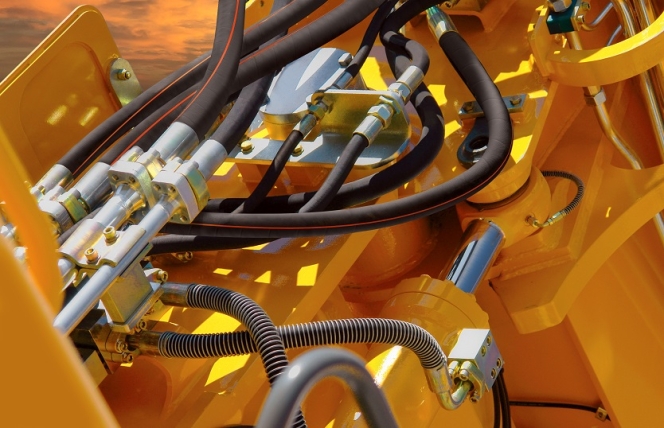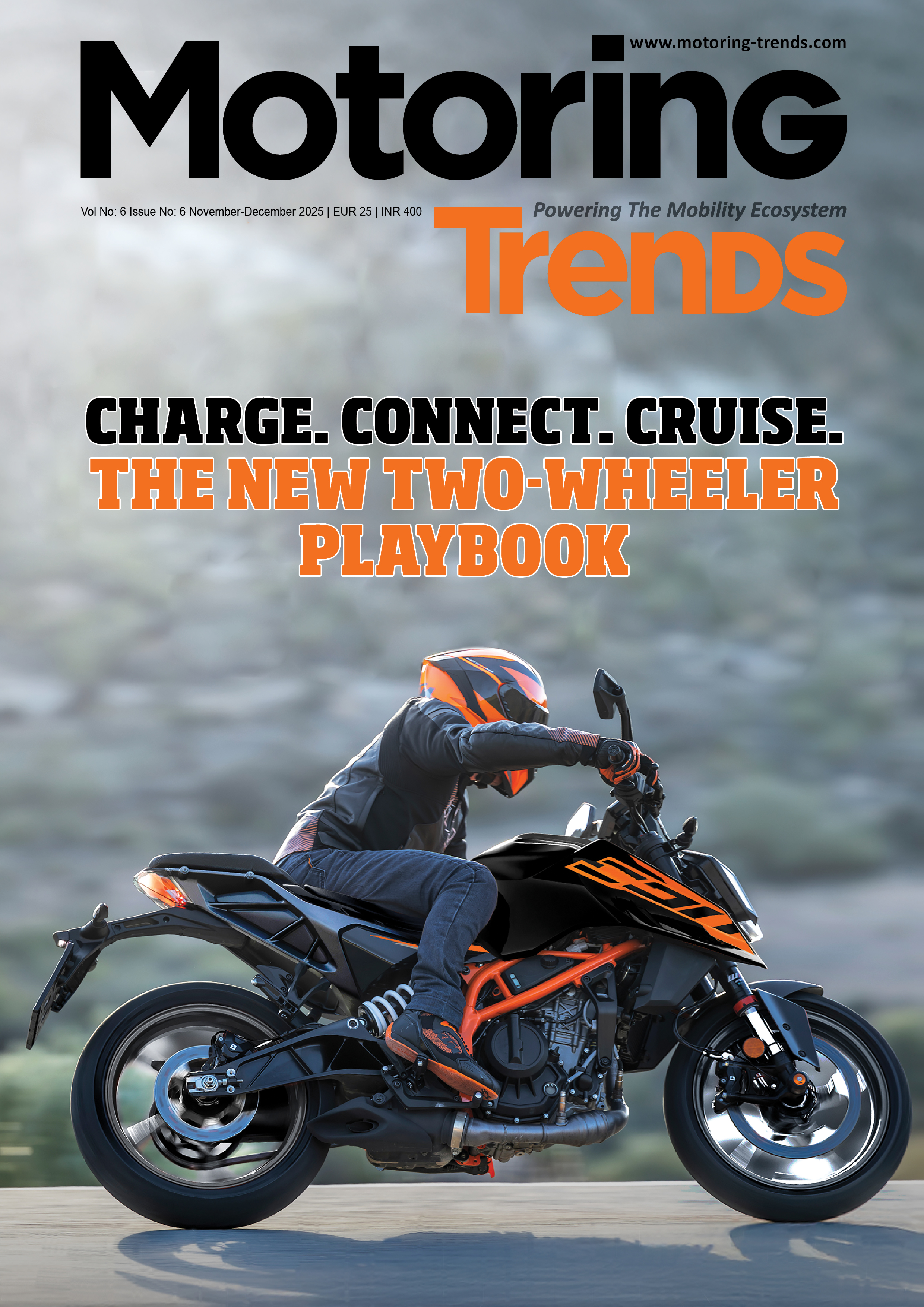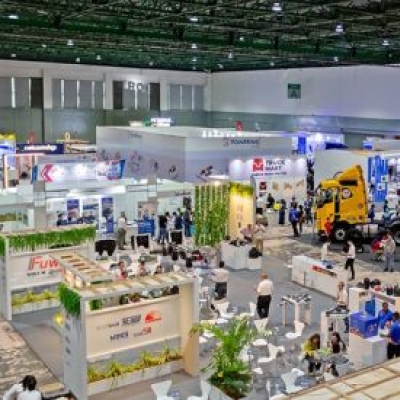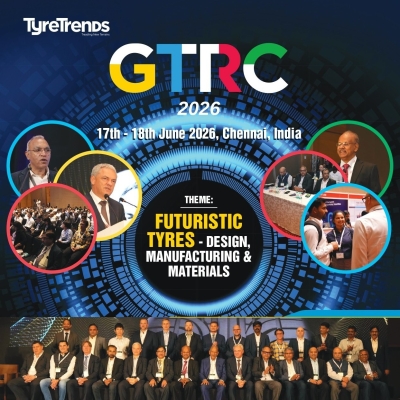- Tata Motors
- Global NCAP
- Safer Choice Award
- Tata Safari
- Tata Harrier
- Vehicle Safety
- Passenger Cars
- SaferCarsForIndia
Innovative G-Python
- By Bhushan Mhapralkar
- October 08, 2021


A good 15m long, the Mercedes-Benz OC 500 RF 2542 has two-axles at the rear and one at the front. Its name suggests it to be German. It is therefore perhaps that a European influence is evident from the smooth surfaces and well-defined lines of the G-Python’s exterior design. The standards of fit and finish are good. A sense of sleek and muscular build apparent from the vehicle’s exterior design, the G-Python, according to Kukreja, draws inspiration from the python’s prowess and size. He drew attention to the fine curves and added, “Look carefully at the headlamps; they will remind you of the eyes of a python. They shine like diamonds”. Reflecting luxury, style and an ability to stand out, the sleek and sweeping headlamps of the G-Python coach body work make an interesting part of the facia. The facia in turn has a large windshield with a black theme patch at its bottom. The pasted windows and tall sides of the G-Python nicely complement the facia design, highlighting a good sense of proportion in the process. Like a fully grown python – a reticulated python (Malayopython reticulatus) can reach over 6.25m in length and is termed as the longest snake in the world – the G-Python luxury coach design does appear long and attractive on the Mercedes-Benz multi-axle chassis.
Finer detailing
Powering the Mercedes-Benz OC 500 RF 2542 is a 388 hp, six-cylinder Mercedes-Benz OM 470 Euro VI 10.7-litre diesel engine situated transversely at the rear. It is so located that it feeds power to one of the two rear axles. Its access is governed by an engine lid at the rear. When viewed from a three-fourth angle, the rear accommodates the engine compartment access lid nicely in a large black patch. Replicating the colour theme of the facia (there is a similar albeit smaller black patch under the windshield), the large rear patch of black cleverly hides the enormity of the coach structure. It is no doubt tall and fairly enormous when viewed against a car or a van! On either side of the black patch are sleek and stylish LED tail lamps. “True to our penchant for aerodynamic styling and discreet elegance, the G-Python coach design is based on a modular concept,” said Kukreja. “As much as the exterior, there’s much attention that has gone in the designing and building of the interior too,” he added. Containing diffused lighting, a warm shade of blue and white, the interior exudes a touch of luxury and elegance, much the same way the exterior does.

Employing CR tubes and fire retardant FRP material in its construction, the interior of the G-Python coach design offers good space between each seat row. The seats of the reclining variety are designed and positioned to offer maximum comfort and leg room for passengers. This makes for a relaxing atmosphere. Cabin isolation is brought up to speed with much use of insulation material. “There’s been a good deal of innovation that has gone into the noise isolation of the cabin,” averred Kukreja. With maximum luggage compartment space, easy to operate functions and a long list of optional features like heating, AC, LED screens, mobile-laptop charger, metallic paint, infotainment system, pantry and chemical toilet etc., the G-Python, when it comes to features, offers almost all the bells and whistles. “From the very inception of the design, we made sure that we could accommodate each and every feature that a coach operator could ask for,” Kukreja remarked. “The colour combination and graphics is optional.”

Stating that the attention to European standards has ensured superior built quality, Kukreja said, “From the safety point of view, we have made every effort to exceed the regulatory requirements.” The G-Python coach design employs a laminated glass windshield. The pasted windows on the sides are of the toughened variety. The emergency door has been situated at the rear. Conforming to the bus code, the G-Python seeks proximity to a European integral coach design. It is capable of seating 53 passengers. Available in ‘semi-sleeper’ guise as well, there are no plans to introduce a ‘sleeper’ version as of now. “We may offer a ‘sleeper’ version in the future,” said Kukreja.



An eye for quality
Built with close attention to quality at Guru Ram Dass Body Builders’ Sonipat facility in Haryana, the G-Python coach body design flaunts a super strong reinforced structure that is crash resistant. It is backed by a pan-India after sales support. Offering ease of maintenance and service through easy accessibility to key aggregates and parts, the luxury coach body design is subject to regular updating, according to Kukreja. “This is in line with our philosophy to keep improving a design and incorporate new developments in bus/coach body design and development,” he added. Explaining that his company’s modern plant at Sonipat has state-of-the-art paint booth, shearing and press brake machines, an R&D centre, shower booth and an FRP moulding facility among others, Kukreja said, “The build quality of the G-Python is in line with the company’s quality management system and regulatory requirements.”

Stressing on a robust quality control mechanism in place at GRD’s Sonipat plant to ensure thorough inspection of every material that is procured and every weld joint that is carried out on the structure, Kukreja expressed, “Trained professionals use calibrated measuring instruments and various other machines as part of the quality management system.” “There’s a ‘Red Table Area’ in the Sonipat plant where the selected and reject material are segregated,” he added. Explaining that the G-Python will complement the existing G-Dolfino bus body design, Kukreja averred, “They are more or less parallel offerings.” “The G-Dolfino was launched in 2019 and the G-Python was launched in June 2021,” he said. Asked if the G-Python coach body design would fit a 12m long front-engine bus chassis like the BharatBenz 1624, and Kukreja was quick to answer, “Modifications in the floor structure should make it possible.” Whether it would be done at once? Kukreja is not in favour it seems. “We will take a call on whether we want to offer the G-Python luxury coach body design on any other chassis than a rear engine multi-axle one,” he announced. “For the 12m long front-engine BharatBenz 1624, we have yet another fine design in the form of the G-Dolfino,” he concluded. The G-Dolfino, it should not take long to understand, is inspired by a Dolphin!

ContiTech Launches Reduced Dimension Spiral Hydraulic Hose Series For APAC Region
- By MT Bureau
- December 18, 2025

ContiTech, a Continental group sector, has officially introduced its new Reduced Dimension Spiral hydraulic hose series to the Asia-Pacific market. Designed specifically for construction, agricultural and mining machinery, this series aims to improve equipment efficiency through high-pressure capability, flexibility, a lightweight build and extended service life.
The hose incorporates a four- to six-layer spiral of high-tensile steel wire and an optimised synthetic rubber inner tube. This construction yields a more compact and lighter hose with a tighter bending radius, allowing for easier installation in space-constrained machinery like excavators and loaders. The reduction in weight and size contributes to lower system load and energy consumption while also simplifying logistics, installation and maintenance for improved efficiency across the value chain.
Engineered for extreme conditions, the series operates reliably in temperatures ranging from –40°C to +120°C. It maintains flexibility in deep cold and provides strong resistance to oil and swelling at high temperatures. A durable inner tube and weather-resistant cover ensure consistent performance in demanding settings, from arctic mines to high-temperature industrial plants, minimising environmental stress and the need for frequent maintenance.
The product line spans working pressures from 4,100 to 6,100 psi, complies with ISO 18752 CC class standards and carries MSHA flame-resistance certification, adhering to a 4:1 safety factor. This multi-pressure design allows equipment manufacturers to consolidate hose variants, simplifying inventory management, reducing storage costs and maintaining safety across diverse high-pressure uses. Standardisation further streamlines customer processes in assembly, procurement and upkeep.
Tailored for the Asia-Pacific region, the SRDS version features a reinforced synthetic rubber cover that excels in repeat bending applications. Its compound resists surface cracking in tough conditions, including low temperatures, offering a reliable and cost-effective solution. For more severe environments, the XRDS series includes an abrasion-resistant cover for enhanced protection against impacts, friction, and wear in mining, construction, and forestry, thereby extending service life and reducing downtime.
Aligning with its customer-focused approach, ContiTech applies its expertise in high-performance materials and manufacturing to provide safe, efficient and sustainable solutions. The company collaborates with industry partners to advance reliability, efficiency and sustainability across the construction sector.
Xin Song, Head of Mobile Industrial Solutions, Industrial Solutions APAC, ContiTech, said, “The construction, agriculture and mining industries are rapidly transforming towards greater reliability, lower emissions and smarter equipment systems. Leveraging over 150 years of materials expertise, ContiTech develops customer-centric solutions. The Reduced Dimension Spiral series was engineered with deep insights into industry challenges, delivering breakthroughs in lightweight design, space efficiency and extreme-environment adaptability while maintaining constant high-pressure performance. It helps customers reduce equipment load, improve energy efficiency and maximise value across the full equipment lifecycle.”
Vingroup Announces $3 Billion Multi-Sector Investment In Telangana
- By MT Bureau
- December 09, 2025
Vietnam’s Vingroup has signed a strategic memorandum of understanding (MoU) with the Government of Telangana, outlining a comprehensive plan to develop a multi-sector ecosystem through a proposed phased investment of USD 3 billion. This expansive collaboration aims to drive socio-economic growth in the Indian state through major initiatives in smart urban development, electric mobility, healthcare, education, tourism and renewable energy.
The partnership’s most ambitious component is the planned creation of a large-scale smart city. This new urban area, designed to accommodate approximately 200,000 residents, will integrate sustainable planning principles with international-standard amenities and is expected to generate significant local employment. Supporting this community, Vingroup will develop essential social infrastructure, including international-grade multi-specialty hospitals and an integrated K-12 school system.
A key pillar of the initiative is establishing a sustainable electric mobility ecosystem. This involves launching India's first large-scale electric taxi service within Telangana, supported by a widespread network of charging stations. To ensure a green power supply for this fleet, urban areas and industrial zones, Vingroup further proposes to develop a substantial solar farm. The collaboration will also enhance Telangana’s tourism appeal through a dedicated complex featuring theme parks and wildlife attractions.
The Telangana government has committed to supporting these projects by facilitating land allocation, assisting with master planning and administrative procedures and mobilising the necessary connecting infrastructure. This foundational agreement not only marks a significant step in Vingroup’s international expansion but also strengthens economic and business ties between Vietnam and India, creating a framework for future cooperation and mutual growth.
A Revanth Reddy, Hon’ble Chief Minister, Government of Telangana, said, “The USD 3 billion investment by Vingroup is a massive vote of confidence in the ‘Telangana Rising’ vision, particularly our focus on sustainable urban development and green infrastructure. This is more than capital; it’s a partnership to build a futuristic, net-zero city and introduce India’s first large-scale electric taxi fleet, directly improving the quality of life for our citizens. Our government guarantees accelerated execution to ensure this global vision becomes a local reality.”
D Sridhar Babu, Hon'ble Industries Minister, Government of Telangana, said, "Vingroup's multi-sectoral commitment, spanning smart cities, solar power and advanced social infrastructure like hospitals and schools, demonstrates the stability and breadth of Telangana’s industrial policy. We are committed to translating this significant capital inflow into local opportunity, positioning Telangana as the gateway for Vietnamese and South-East Asian investment into India's fastest-growing economy."
Sanjay Kumar, IAS, Special Chief Secretary to the Government, Government of Telangana, said, “We welcome Vingroup’s presence in Telangana and recognise the achievements the Group has made in Vietnam, particularly in urban development, green infrastructure and electrified transportation. With the Group’s extensive expertise and capability to execute large-scale projects, we believe that this cooperation will mark an important step forward in shaping a modern and sustainable urban landscape and improving the quality of life for the people of Telangana.”
Pham Sanh Chau, CEO of Vingroup Asia and VinFast Asia, said, “Vingroup sees tremendous potential in Telangana and we aspire to build a long-term partnership with the state government. With our proven track record in delivering mega urban developments, large-scale infrastructure and a comprehensive electric mobility ecosystem, we believe that our collaboration with Telangana will generate tangible value, promote sustainable development and enhance the quality of life for local residents.”
- Indo-German Partnership for Green and Sustainable Development Goal
- Christine Toetzke
- Federal Ministry for Economic Cooperation and Development
India And Germany Discuss Electric Mobility Ecosystem Transformation
- By MT Bureau
- December 05, 2025

India and Germany convened a high-level roundtable under the Indo-German Partnership for Green and Sustainable Development (GSDP) to discuss solutions for advancing electric mobility ecosystems. The ninth edition of the GSDP Conversation Series focused on ‘Electric Mobility: From System Integration to Skills Development’.
The roundtable brought together senior officials from key central ministries, state and city administrations, public transport undertakings, distribution companies (DISCOMs), industry leaders and international partners to address the shift from fragmented pilots to a coordinated, ecosystem-wide transformation.
The discussion underlined that India can only achieve its electric mobility targets through integrated planning across various sectors, including renewable energy, transportation, manufacturing, finance and skills. Stronger coordination among the central government, states and cities was also noted as key to successful implementation.
The participants prioritised five key themes to shape the next phase of India’s e-mobility transition:
- Multimodal Electrification: Integrating metro, bus, shared mobility and last-mile services into a unified electric transport system.
- Charging Infrastructure and Grid Readiness: Enhancing coordination with DISCOMs, ensuring land and power capacity, standardising charging systems and strengthening battery safety and circularity.
- Financing and Procurement: Improving bankability, payment security, risk sharing, contract structures and financial instruments for e-buses and commercial EVs.
- Skills and Gender Inclusion: Addressing shortages in EV engineering, charger installation, battery management, safety and digital mobility services while expanding opportunities for women.
- Indo-German Collaboration: Advancing cooperation in areas such as grid management, multimodal planning, standardisation, battery circularity and vocational training.
Christine Toetzke, Director General for Asia, Latin America, Middle East & Eastern/Southeastern Europe, Federal Ministry for Economic Cooperation and Development (BMZ), Germany, said, “Germany and India share a long-standing partnership rooted in trust, ambition, and a shared vision for a greener future. The Green and Sustainable Development Partnership is central to our international engagement, reflecting our joint commitment to make development both climate-compatible and socially inclusive. Electric mobility is not merely a technological shift; it is a transformation of how our societies move, how we design our cities, and how we create opportunities for future generations. As India advances this transition at a remarkable scale and speed, Germany stands ready to support with system-level planning, vocational skills development and innovation in areas such as battery management and circular economy solutions. Our cooperation is a long-term investment in cleaner air, safer mobility, and more equitable access to opportunity for all.”
Senior officials emphasised the importance of aligning national schemes with local implementation capacity, noting that India now requires system-wide approaches that combine depot electrification, grid readiness, multimodal integration, transparent procurement models and a skilled workforce. The dialogue reaffirmed the commitment of both nations to accelerate clean, efficient and inclusive mobility solutions.
- Hagerty UK
- Vehicle Excise Duty Exemption
- VED Exemption
- Historic & Classic Vehicles Alliance
- Classic Cars
UK Chancellor Maintains Vehicle Excise Duty Exemption For Classic Cars
- By MT Bureau
- November 27, 2025

The UK's cherished classic car community can finally breathe a collective sigh of relief. The decisive action by Chancellor Rachel Reeves in the Autumn Budget to maintain the Vehicle Excise Duty (VED) exemption for vehicles over 40 years old has ended a prolonged period of uncertainty, securing a stable future for this vital sector. Mark Roper, Managing Director of Hagerty UK, welcomed this clarity, noting that the confirmed freeze on fuel duty further solidifies a supportive environment for owners. He underscores that this is a significant win for the GBP-7.3-billion industry that supports over 100,000 jobs and contributes GBP 3 billion annually to the UK economy, all while championing an inherently sustainable form of motoring.
This perspective on sustainability is reinforced by Dale Keller, CEO of the Historic & Classic Vehicles Alliance (HCVA), who affirms that the tax exemption logically aligns with environmental objectives. Classic vehicles, preserved as moving heritage, have a negligible lifecycle carbon footprint compared to new manufacturing and are driven infrequently. The original principle of the exemption remains valid, as applying a modern tax to these rarely used assets would be inequitable.
Alongside the VED news, the Chancellor confirmed the continuation of the MOT exemption for classic cars, though this will remain under review. On this point, Roper of Hagerty UK strikes a note of caution, observing that many within the industry advocate for an annual roadworthiness check. He notes that a great number of responsible classic owners voluntarily submit their vehicles for an MOT each year, valuing the independent assurance of safety and mechanical integrity it provides.
For Hagerty UK, as a specialist insurer deeply embedded in this world, the government’s affirmation is a powerful endorsement of the sector's cultural and economic value. Through its vibrant Clubhouse at Bicester Heritage and unique events like RADwood, Hagerty is actively fostering this passionate community. Similarly, the HCVA continues its mission to protect and promote the diverse ecosystem of specialists, restorers and businesses that form the backbone of this multi-billion-pound industry, ensuring its legacy for generations to come.






Comments (0)
ADD COMMENT